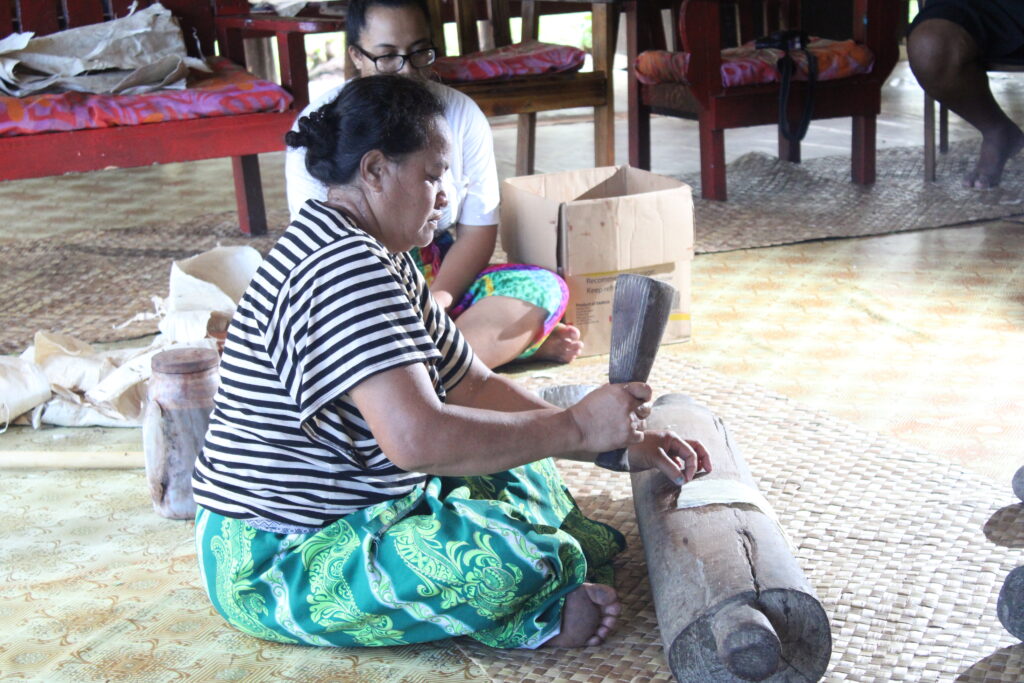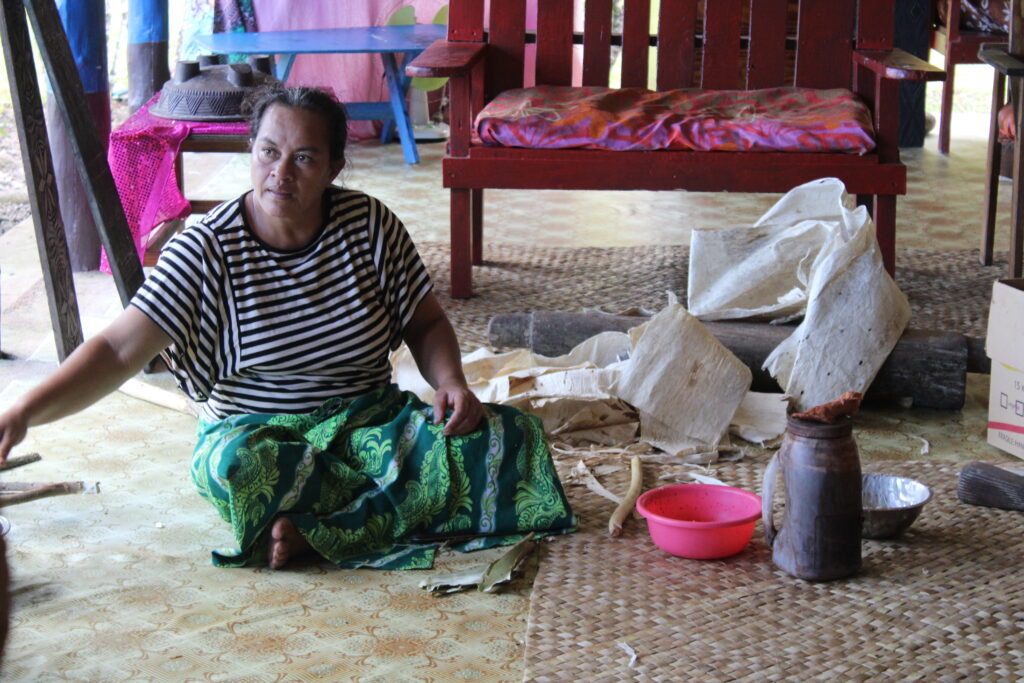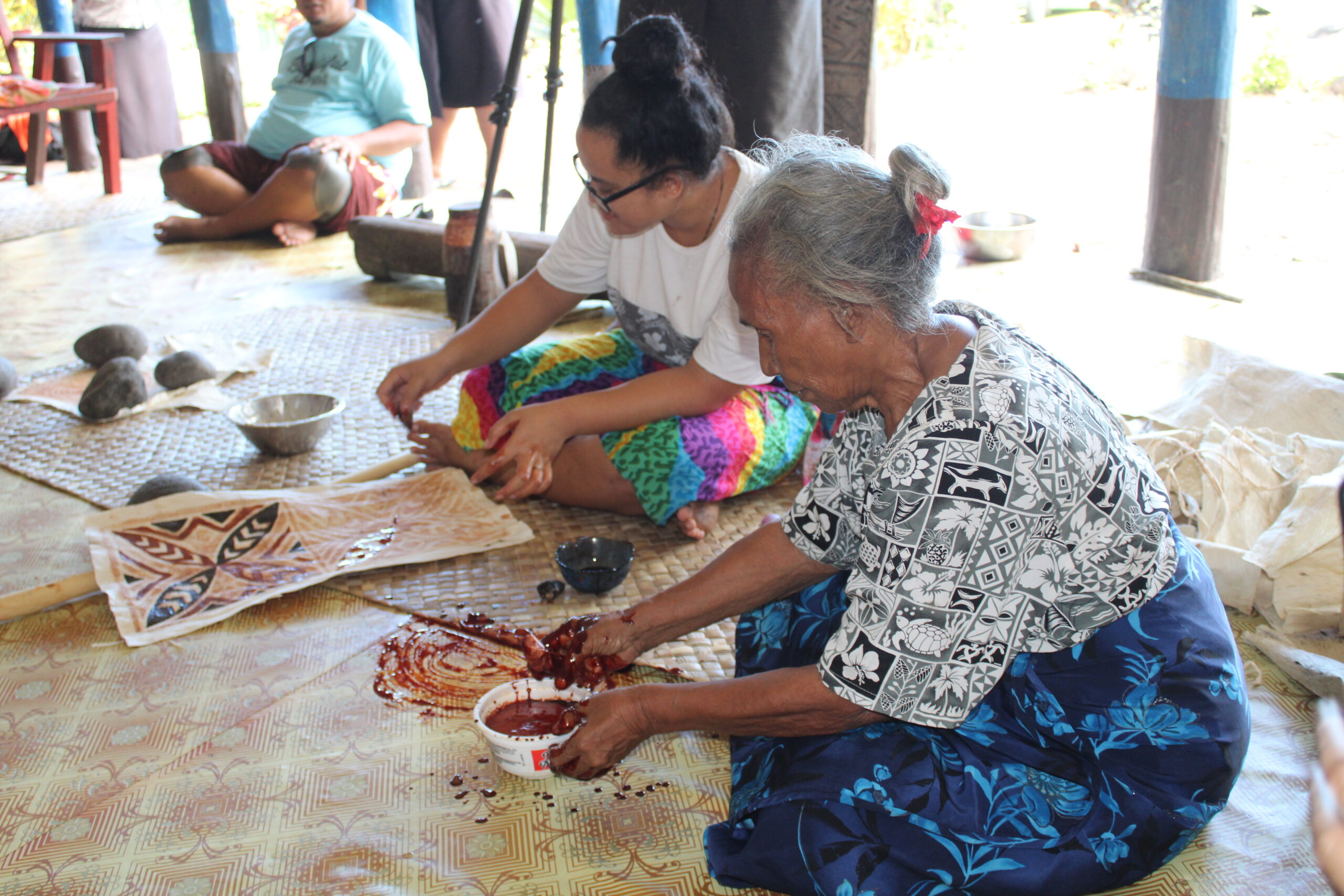By Martha Taumata Faavae

If you are a tourist to Samoa who is adventurous enough to land in Savai’i make sure you take a ‘siapo’ when you leave the island.
Before the white man burst through the far horizon to shock the watching natives into naming them ‘palagi’ or ‘sky busters’, Samoans were dressed in ‘siapo’.
The ‘palagi’ offered many of the marvels from the ‘modern’ world they made many of the native items go out of fashion.
Traditional ‘siapo’ wear were amongst them when it was replaced by cotton clothing.
The soft material of the ‘siapo’ is taken from the bark of the mulberry tree.
Guess who are better at processing the material from the tree all the way to Samoans walking around clothed in it?

One of the best ways to answer that question starts with a boat ride at the Mulifanua Wharf on the western end of Upolu Island.
You can actually see it from Faleolo International Airport.
The Lady Samoa runs the inter-island route between 40 -60 minutes from end to end.
The Salelologa wharf is the Savaii end of the voyage. A short tar-sealed road connects the wharf to the main road that runs around the island.
There is a row of ‘palagi’ buildings (another story) on both sides of the road from the wharf.
You will finally come to the only traffic lights on the island at the intersection. Take a left turn and keep going for the next 20 minutes heading on a southerly direction until you come to a board signage on your right with the words ‘Siapo Demonstration.’
You are now in the village of Vailoa, Palauli. Turn in and you are most likely to meet a grand 86-year-old lady named Fa’amuli Salu.
As the family matriarch, she is at the head of a 6-generation family tree of ‘siapo’ makers in the village.
The family tree starts with her great grandmother who passed the skills on to her grandmother, mother and then herself.
Her daughter-in-law Faapito Lemuelu is now involved and so too is her granddaughter, Tamasailau Julie Lemuelu.
“When it was my turn to continue the family ‘siapo’ making tradition it was a challenge trying to encourage public interest against the popular demand for the (‘ie toga’) fine mat,” Fa’amuli Salu reflected.
“The ‘siapo’ is also as important in our culture.”
Her pursuits to keep the culture of the ‘siapo’ alive and strong brought her to the attention of the Samoa Tourism Authority, STA.
The village ‘Siapo Demonstration’ is about working together with the Samoa Tourism Authority to promote this important part of the local culture that will benefit the tourism industry as well.
The project makes it possible for tourists visiting Savaii to see first hand the making of the ‘siapo’ and appreciate this part of Samoan culture.
Visitors are able to not only watch but also re-live the experience and the adventure of being in a foreign land and culture with a souvenir ‘siapo’ to take home
‘Siapo’ tablemats are the main souvenir items available and are easier to fit into the travel luggage without worry.
But the small souvenir item holds huge treasured memories of a special moment for its owner in another faraway corner of the world.

The more serious ‘siapo’ demand for Salu and her family are for special wedding wear and decorations.
Orders are placed from as far as the United States, Hawaii and American Samoa.
“Our last order for a wedding dress came from the US but the family had to cancel because of the COVID-19,” Salu disclosed.
While the siapo making family do benefit from the use of their traditional skills the main satisfaction for them is to see ‘siapo’ culture kept alive.
“The natural materials for ‘siapo’ making are available right here in our home environment of Vailoa.
“We have about 5 acres planted with mulberry trees and everything else we need are available to us right here.”
Salu was drawn into the family ‘siapo’ making tradition in 1966 and kept it going until she felt it was time to pass it on.
Her daughter-in-law Faapito was next in line after others in her family did not show any interest.

The 47-year-old daughter-in-law struggled with the work at first because there were still much to learn.
After being doing it for 5 years the skills and the responsibility passed on to her by her mother-in-law has become second nature.
“ I thank the Lord for my daughter Tamasailau who has picked up the skills and is also at the stage where she can handle the demonstrations, when my mother-in-law and myself are not available,” Faapito sighed with her daughter coming into the picture.
Surprisingly for a 21-year-old well-educated young lady, Tamasailau is showing a strong resolve to continue the family tradition.
“ I’ve made the choice to give up my work and concentrate on keeping our family ‘siapo’ making tradition going while helping to promote our tourism industry at the same time,” she pledged.
“I’m determined to keep our family tradition alive and will be looking at other opportunities to keep it going.”
For starters Tamasailau wants a bigger building to stage their demonstrations and it is a good sign that augurs well for the future.
All foreign visitors reaching Savai’i will have access to a souvenir ‘siapo’ that will tell more than just the story of Samoa as an adventure destination.
The amazing story of the siapo making family of Fa’amuli Salu, Faapito and Tamasailau Lemuelu of Vailoa , Palauli will also be told.

